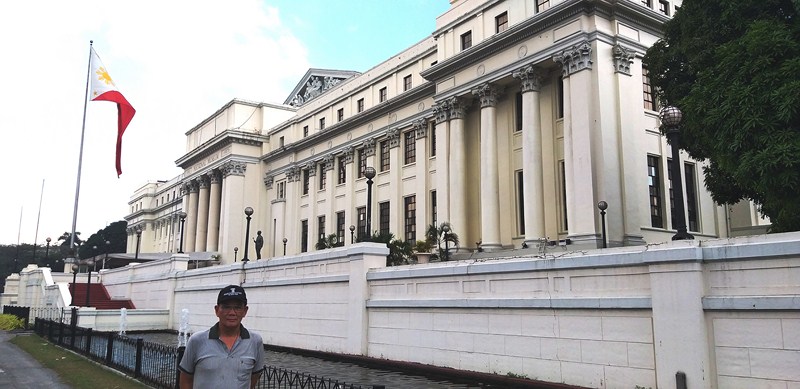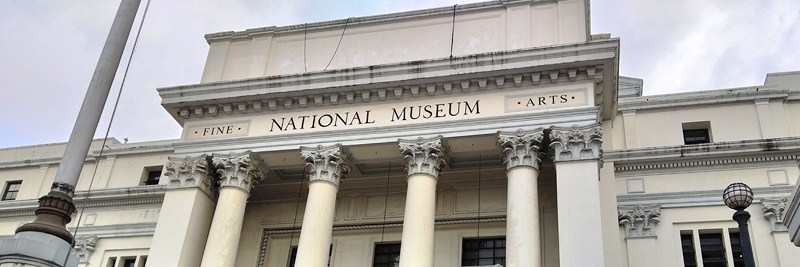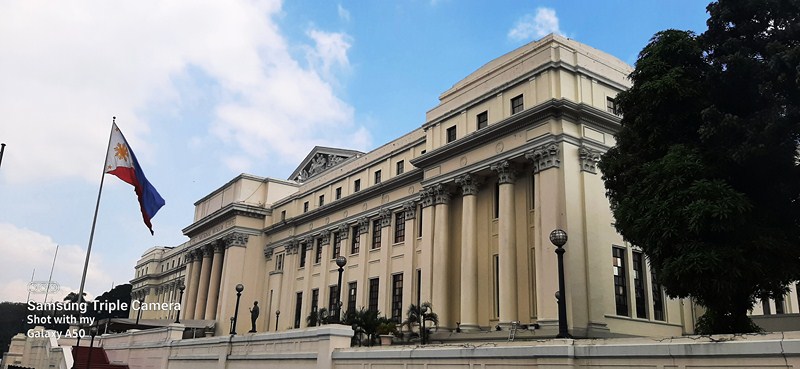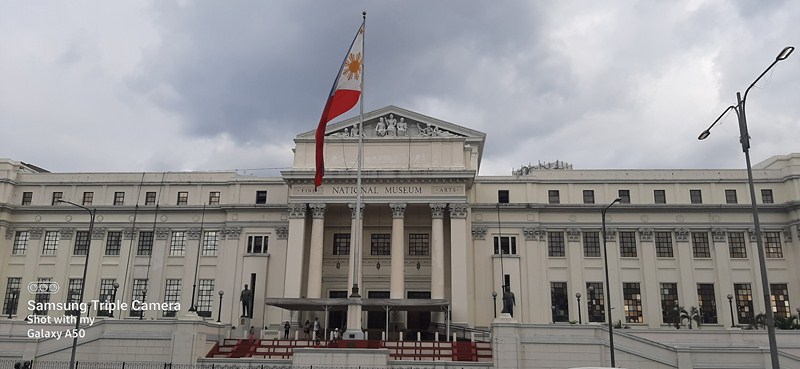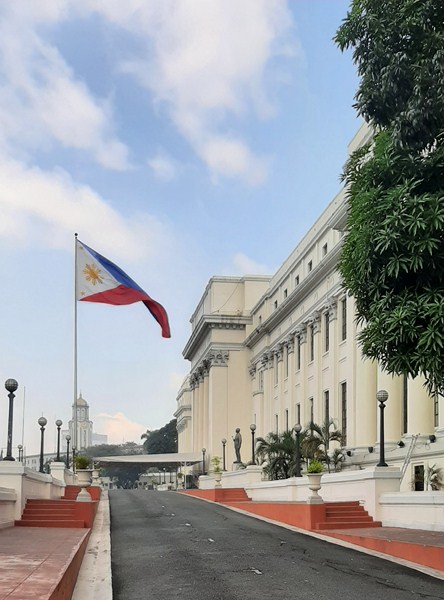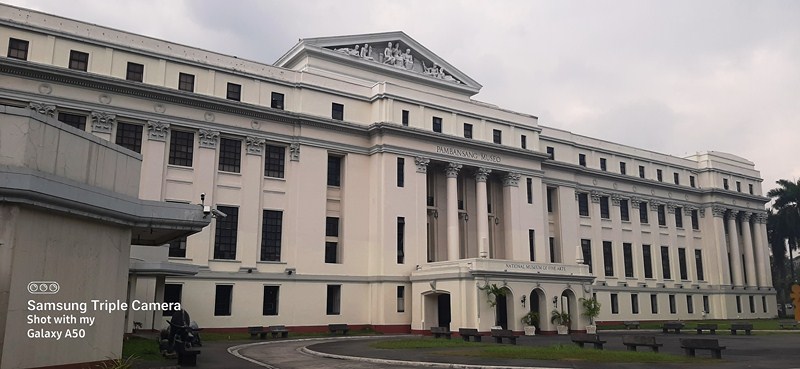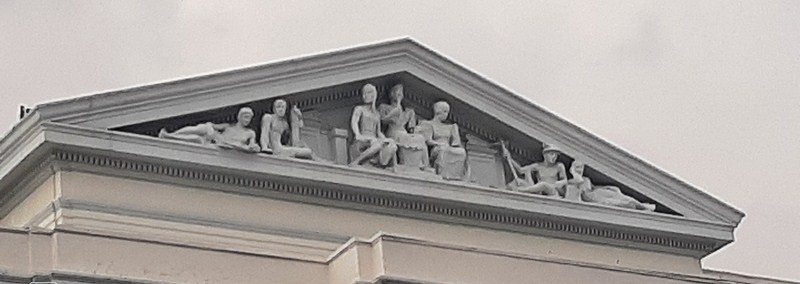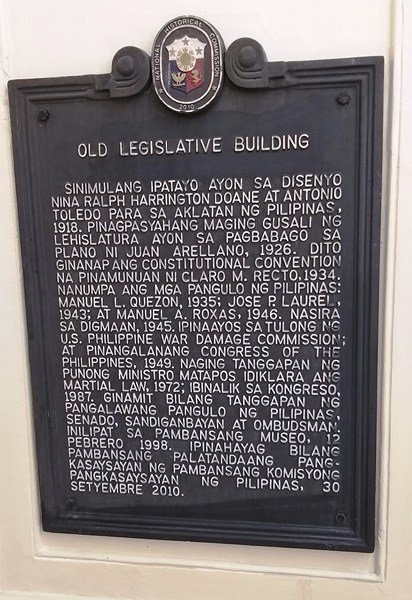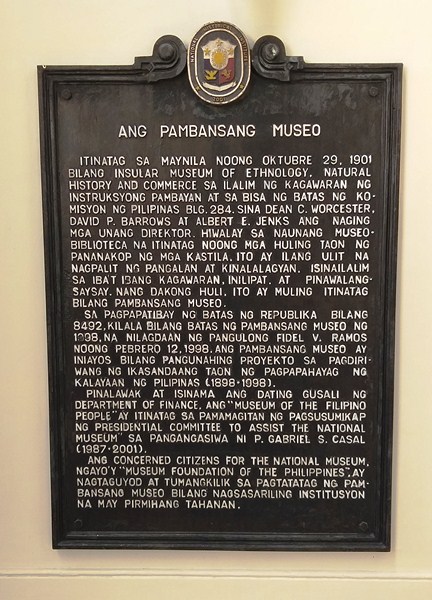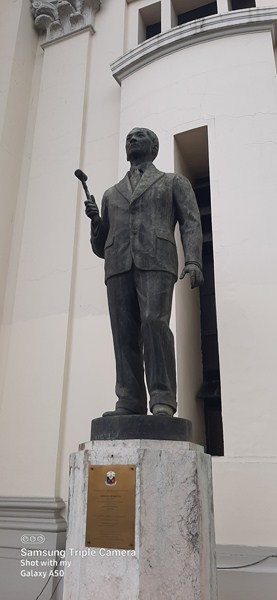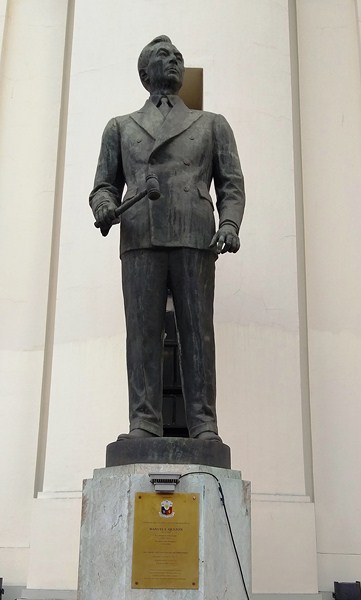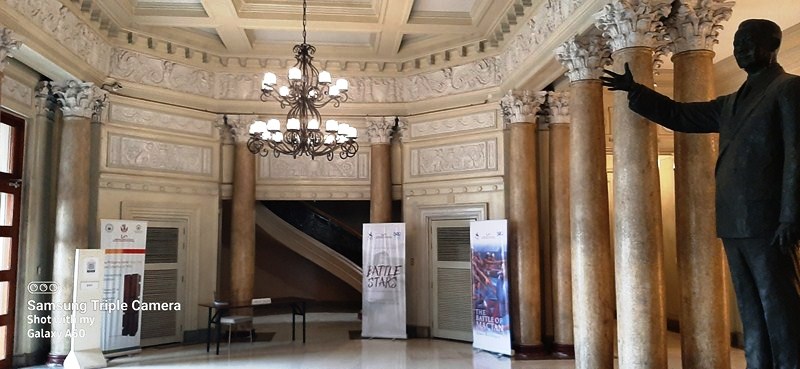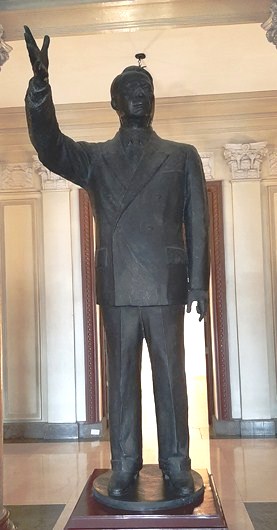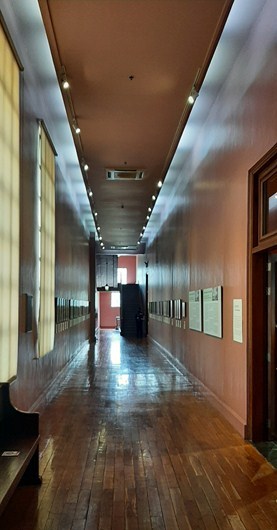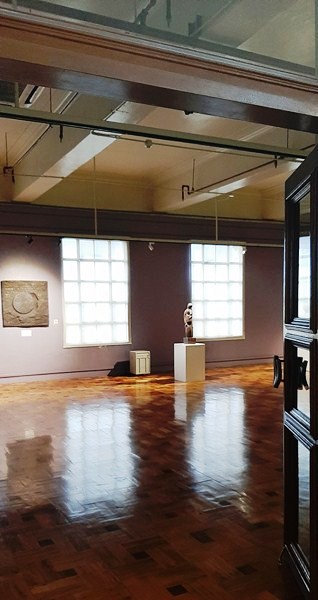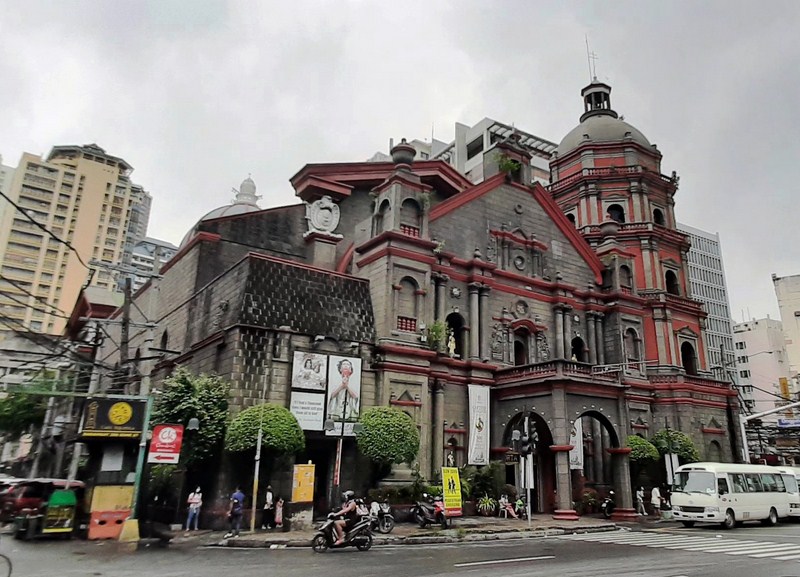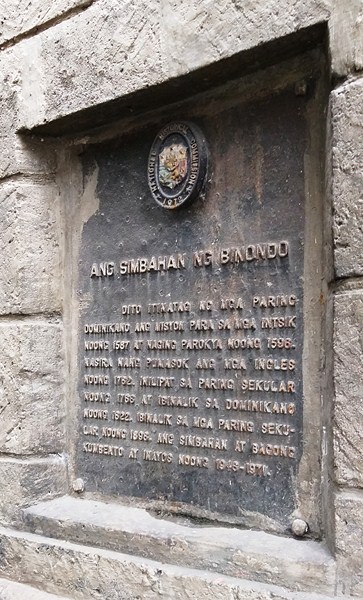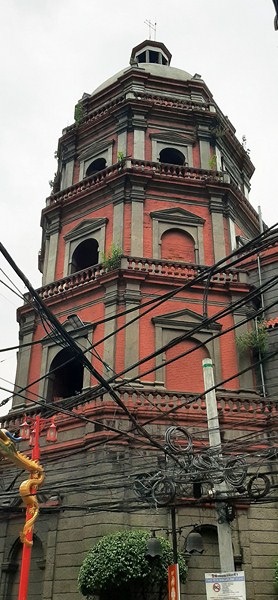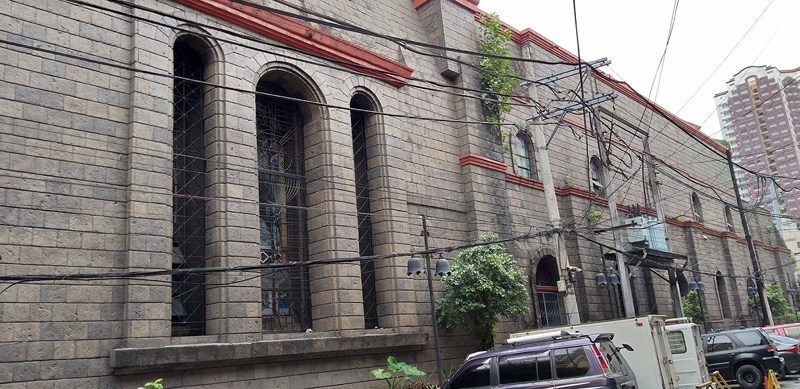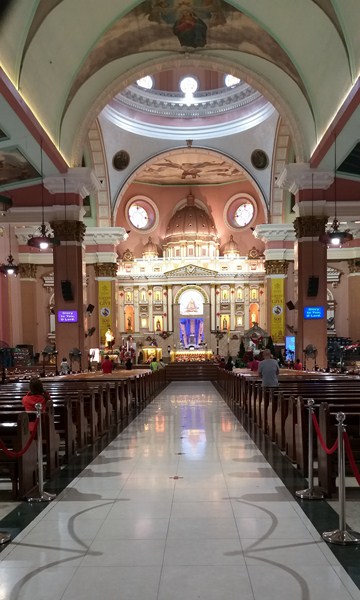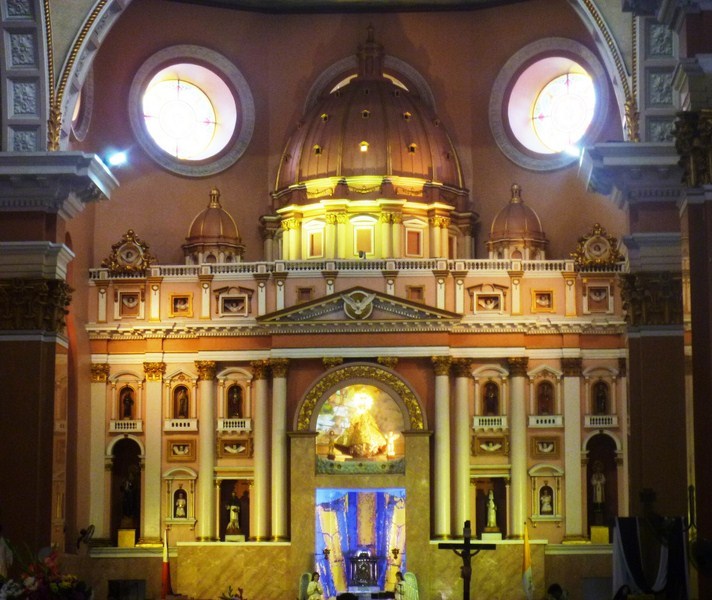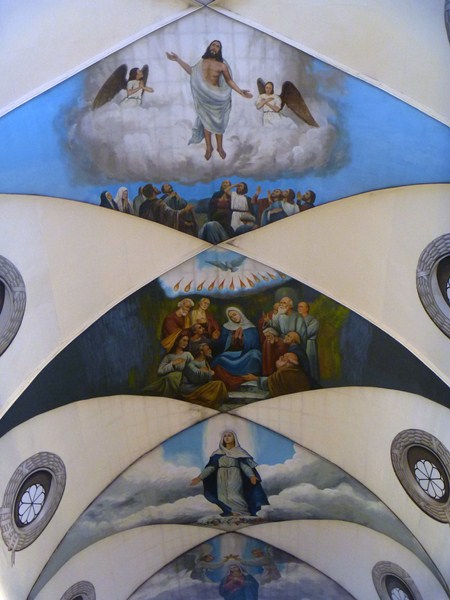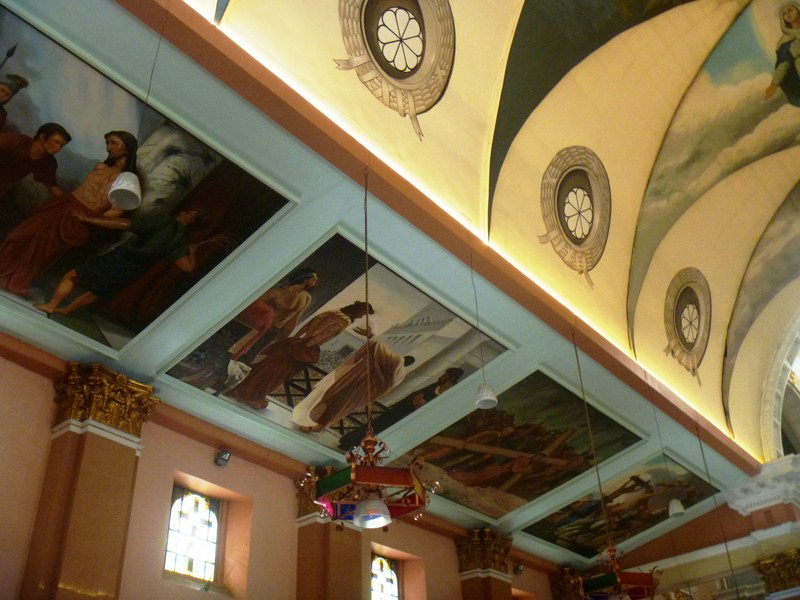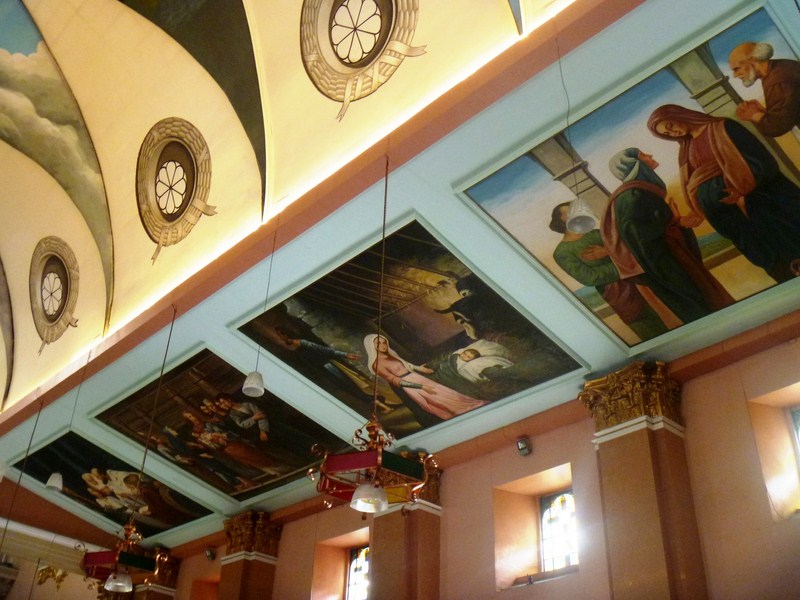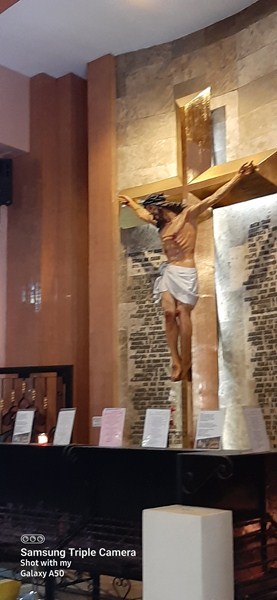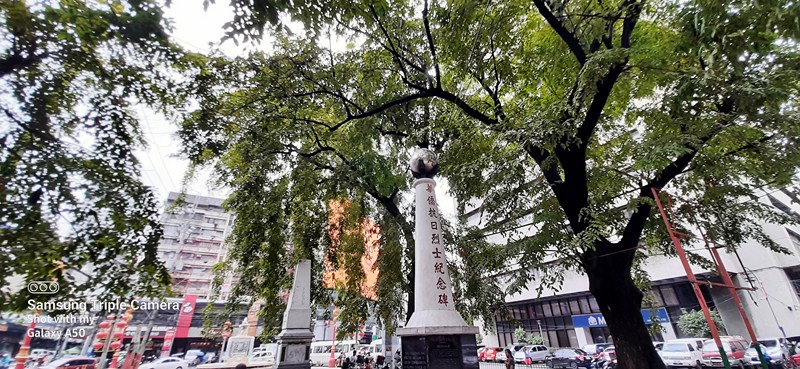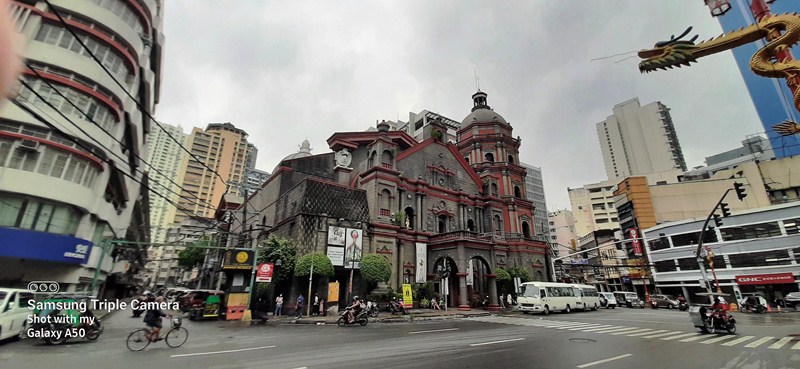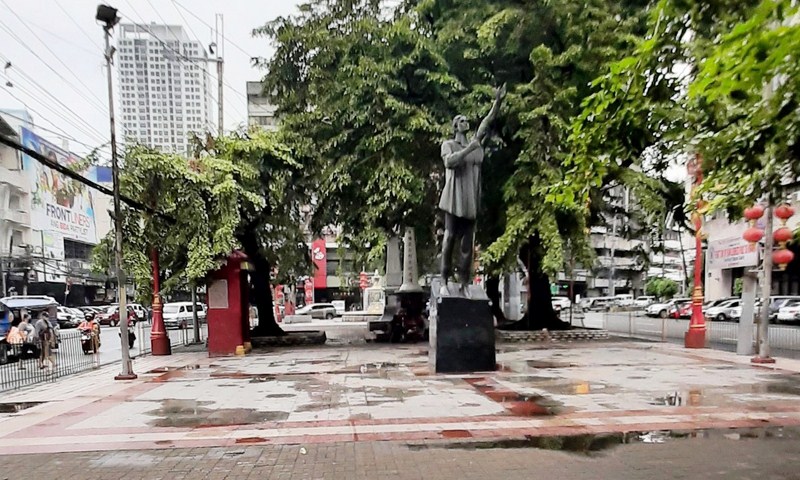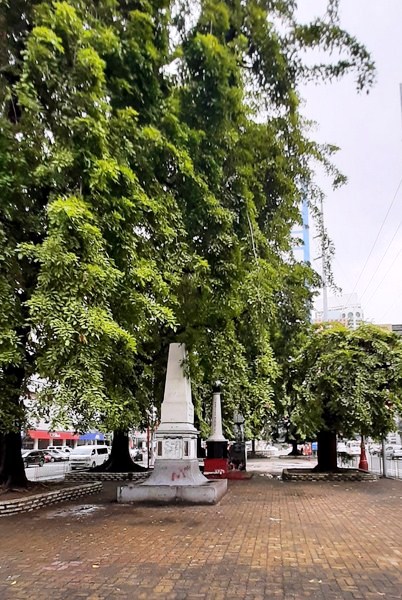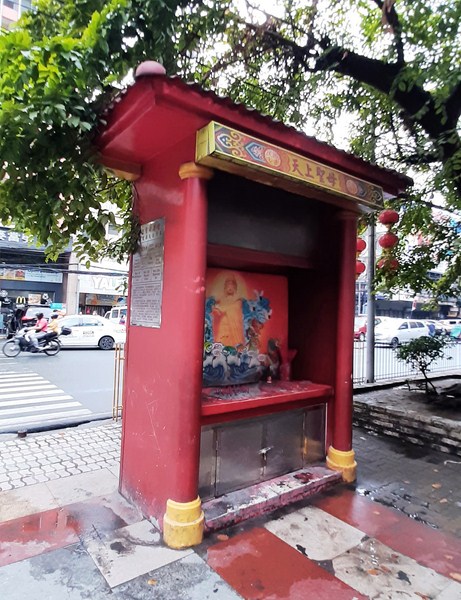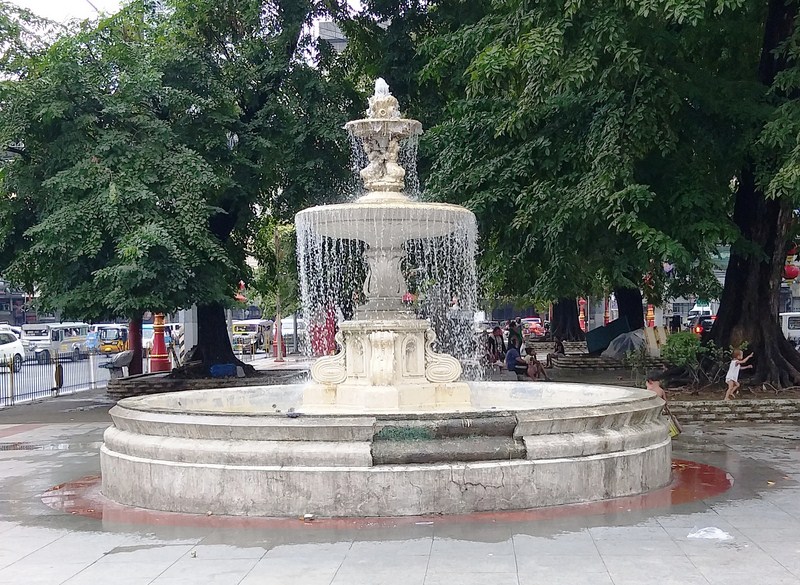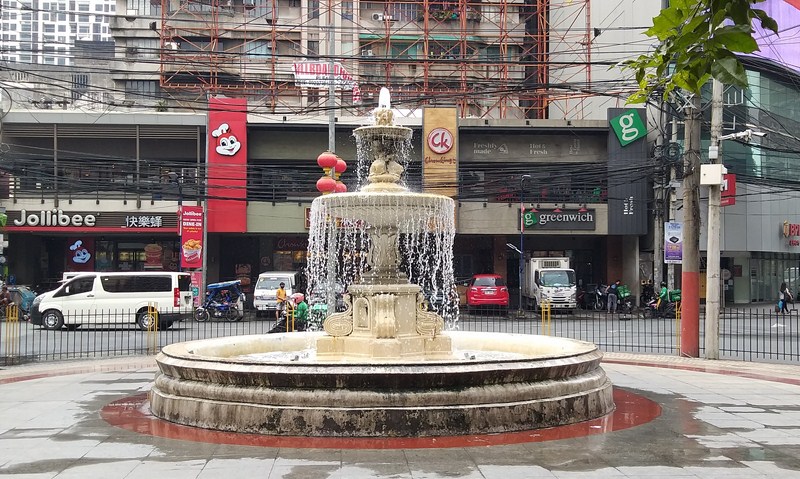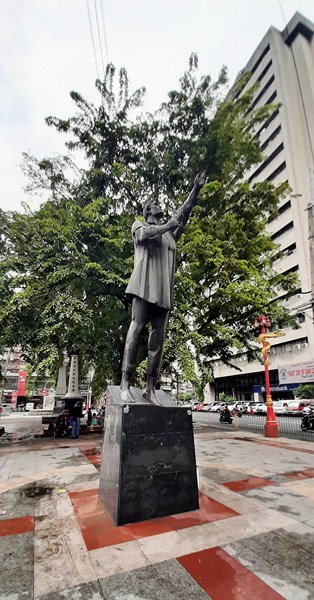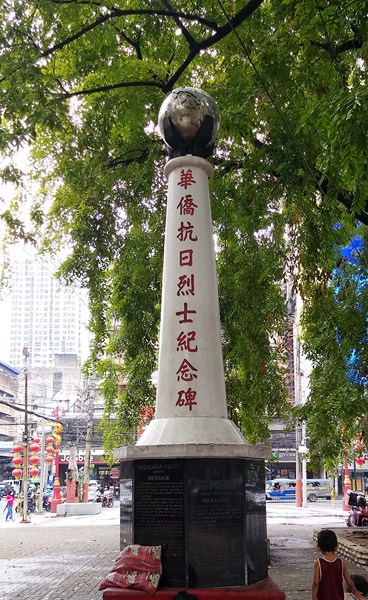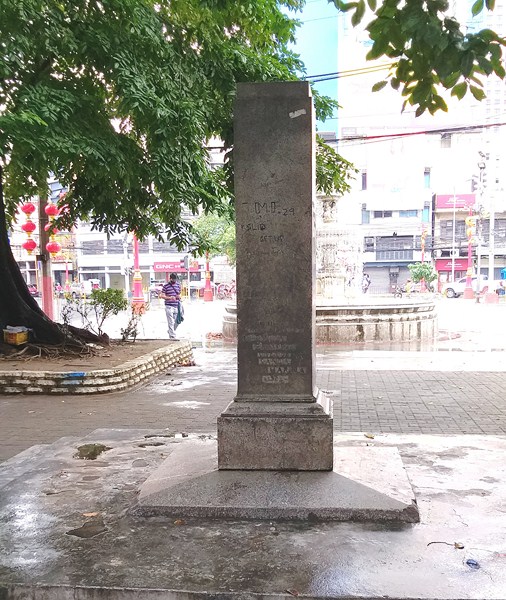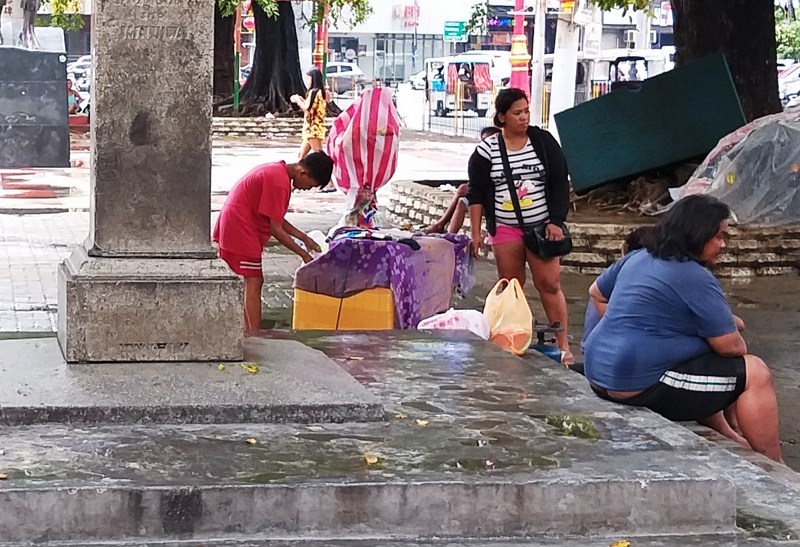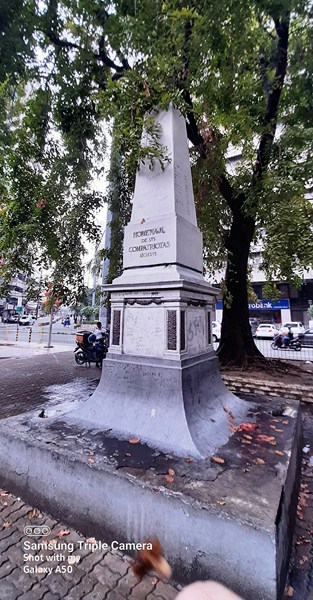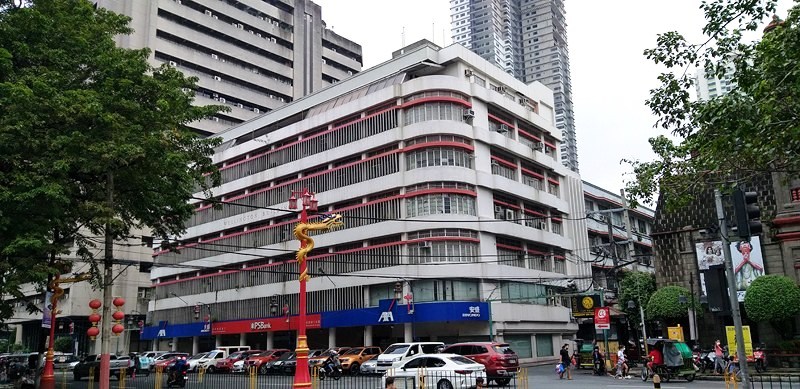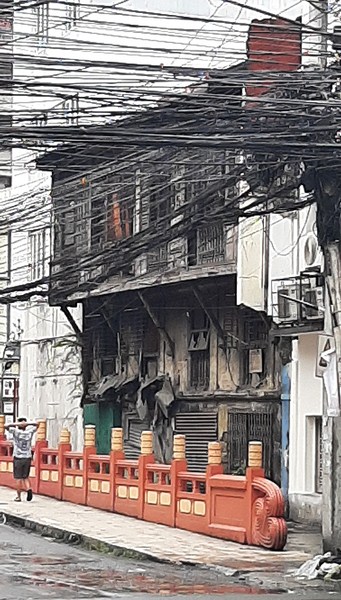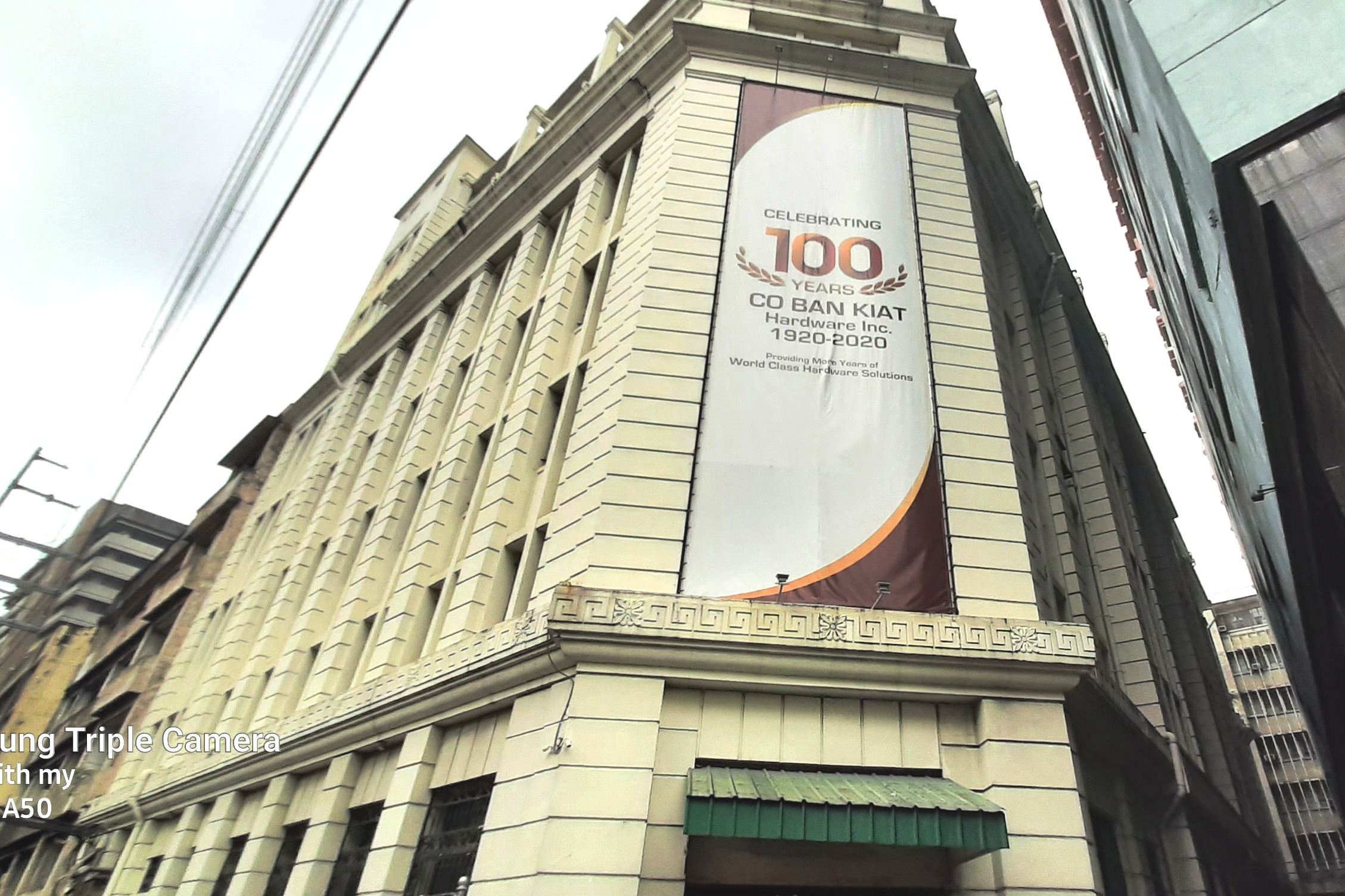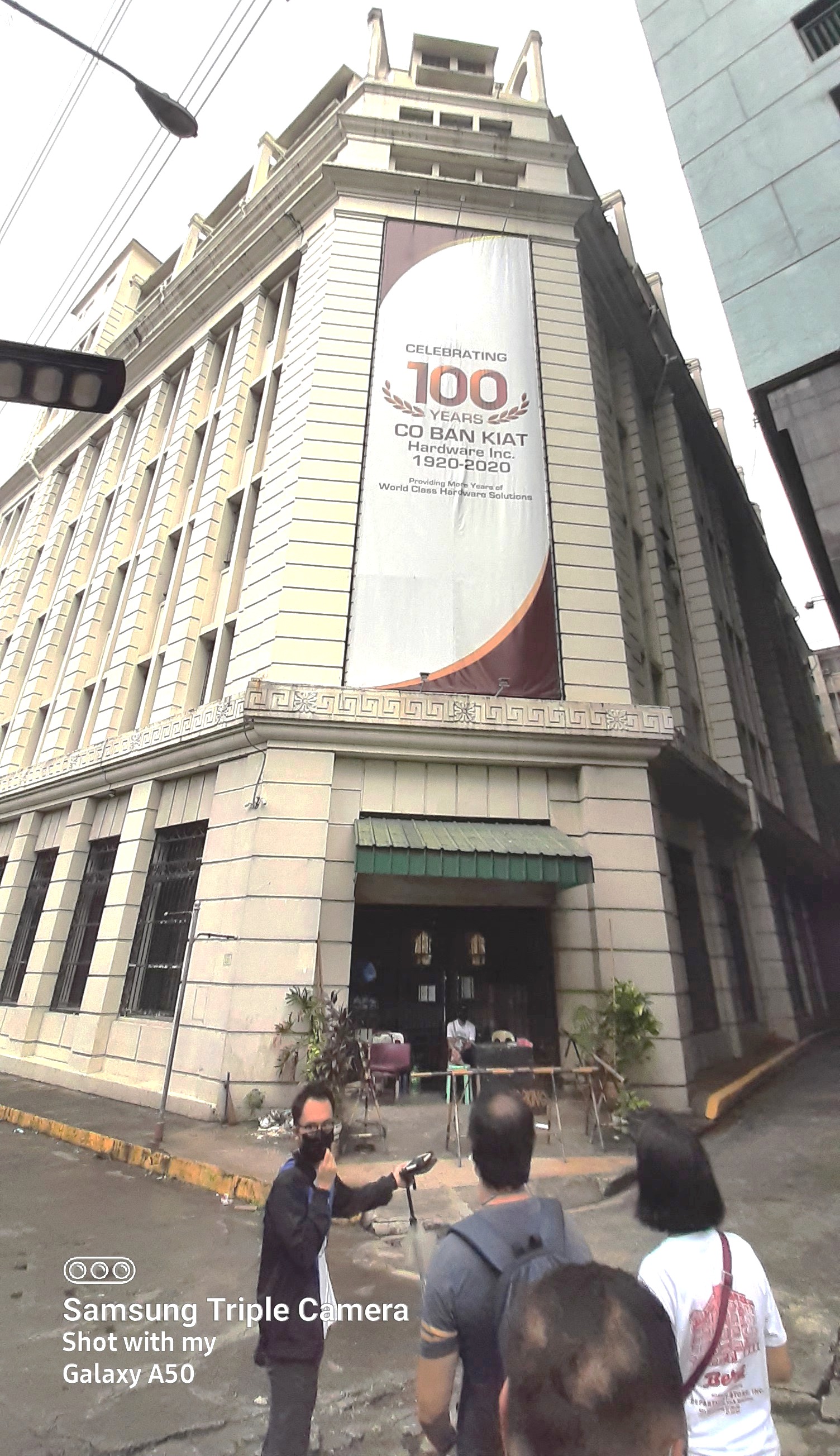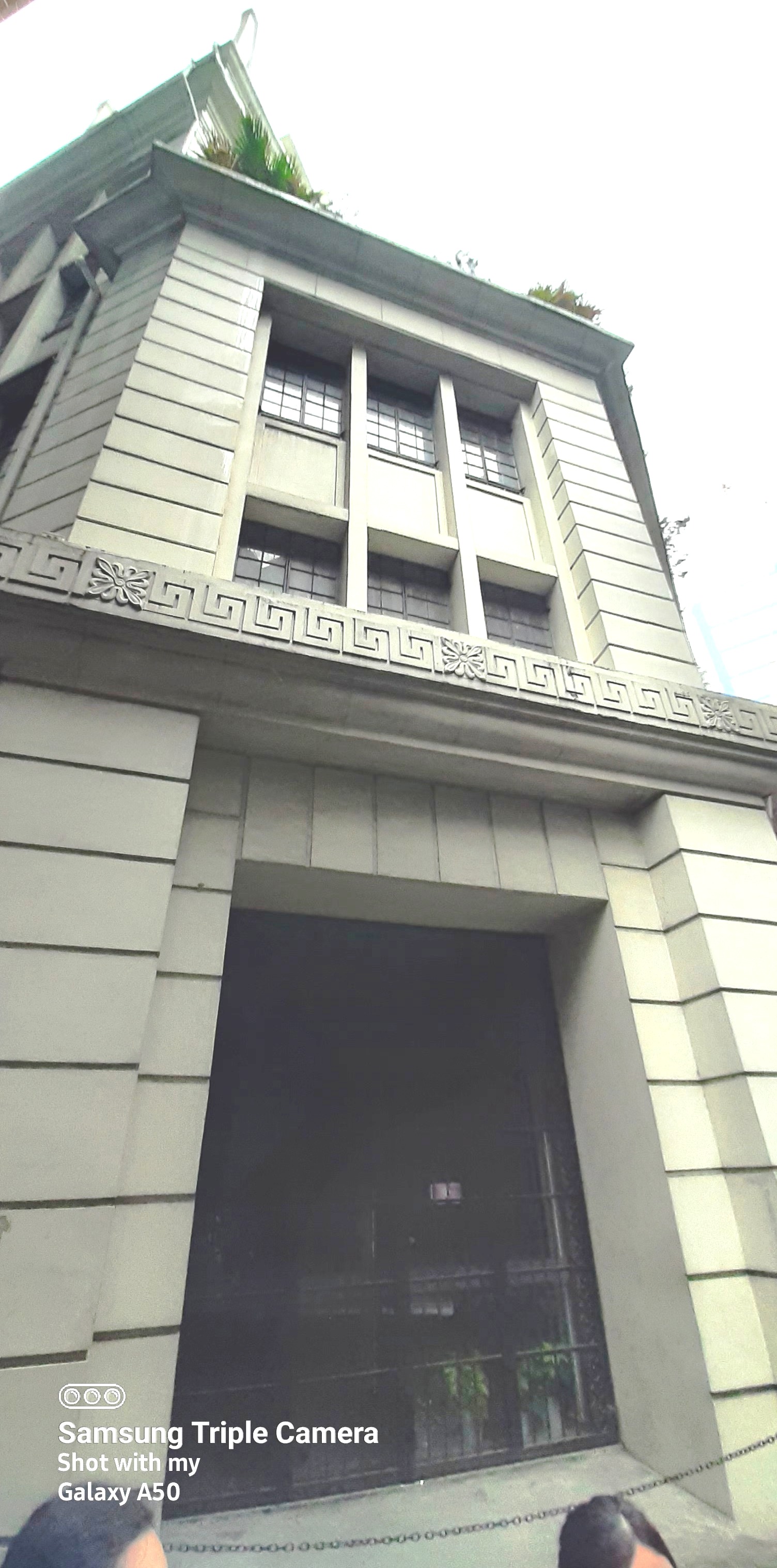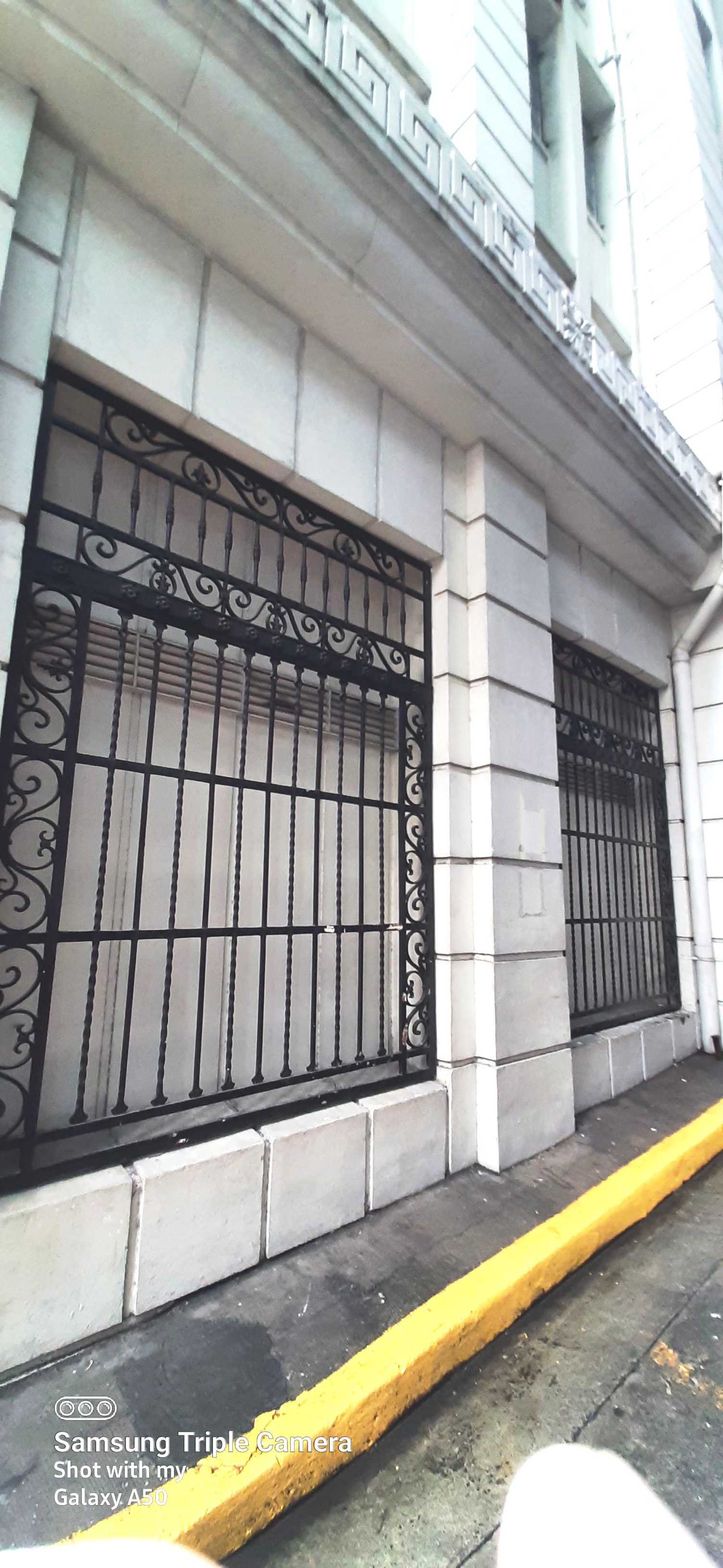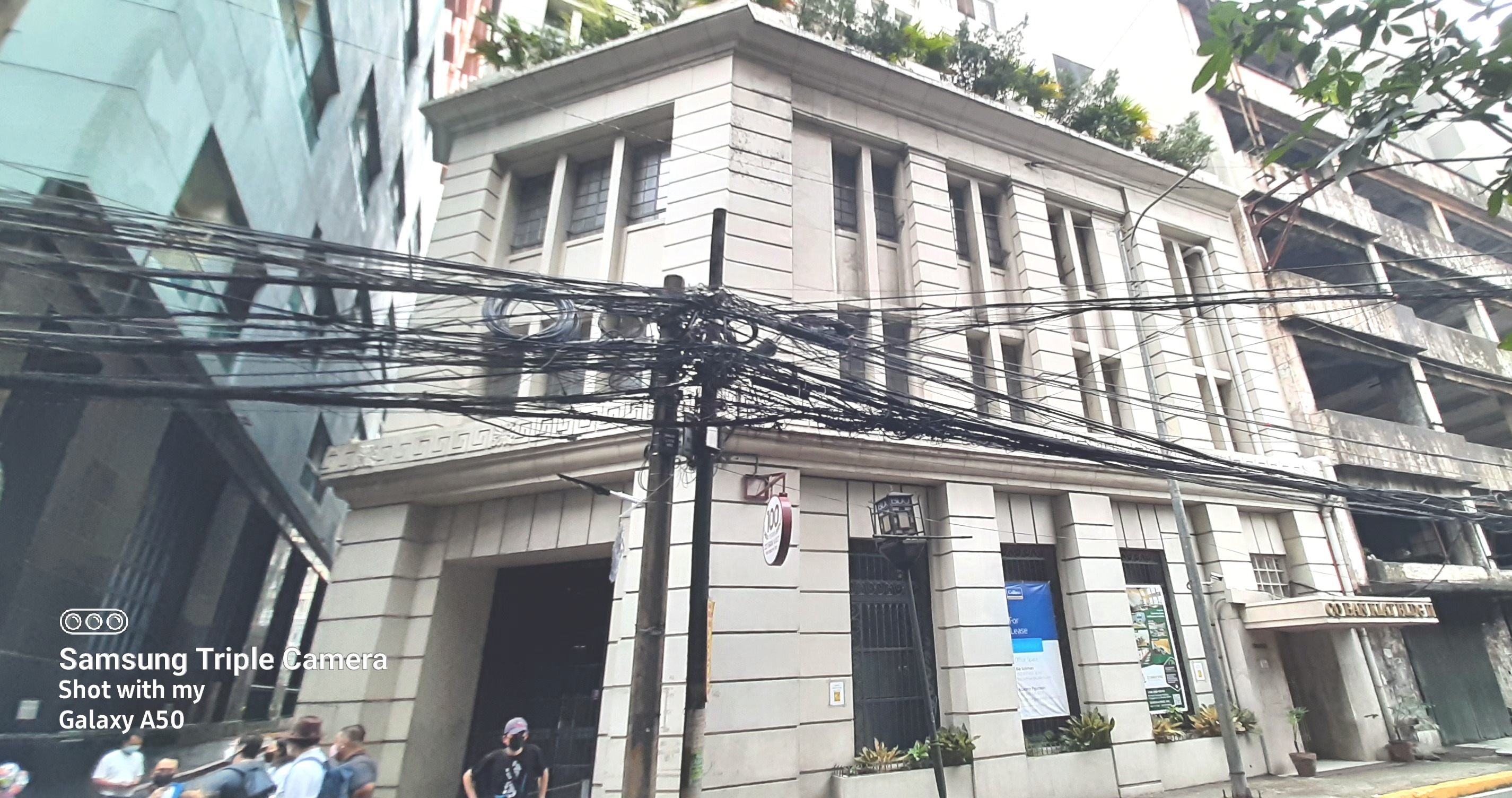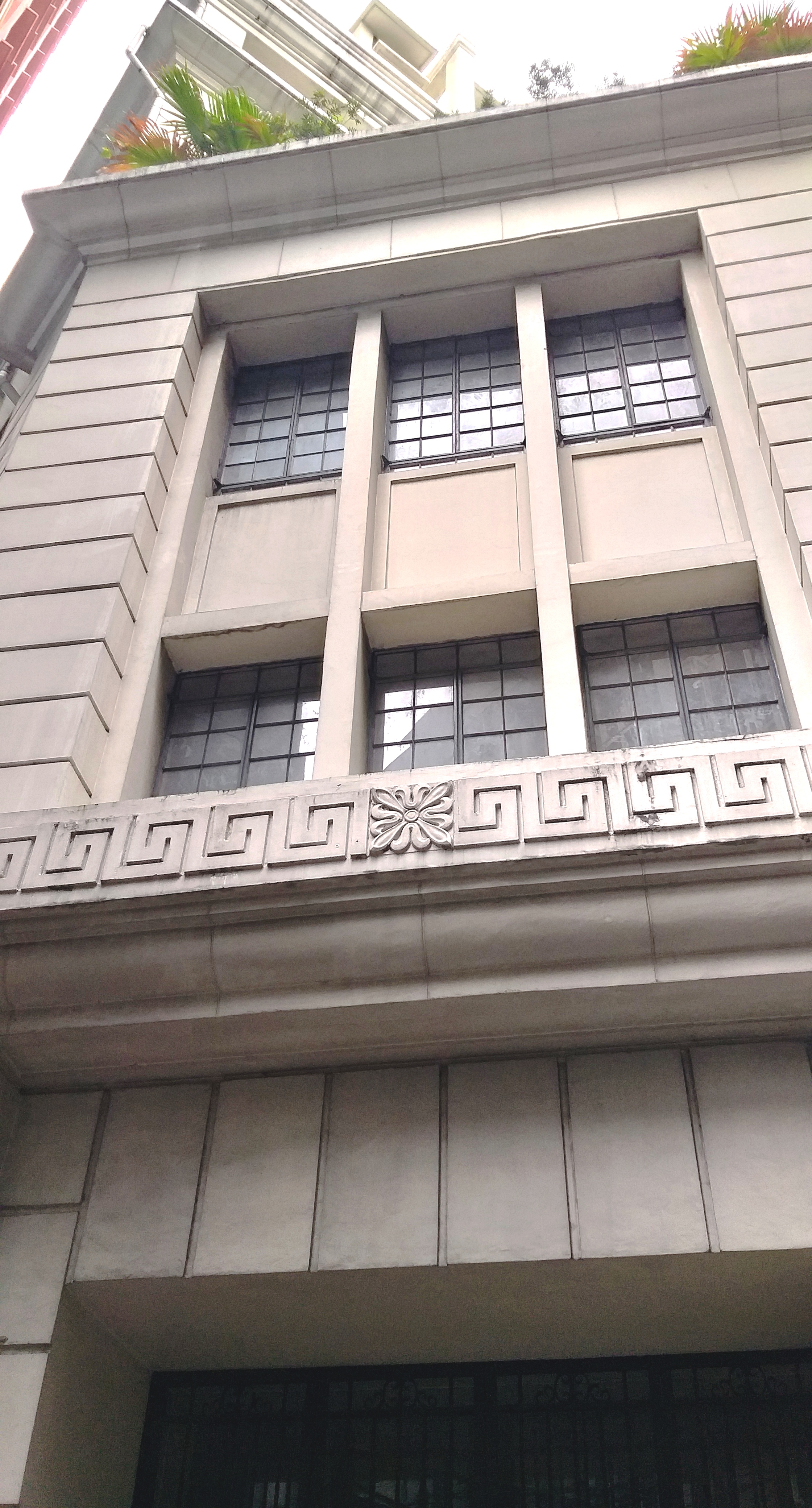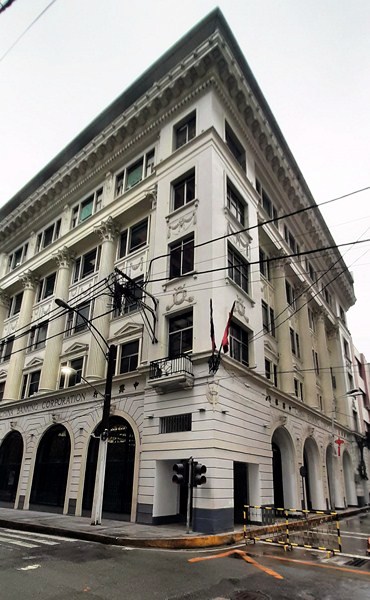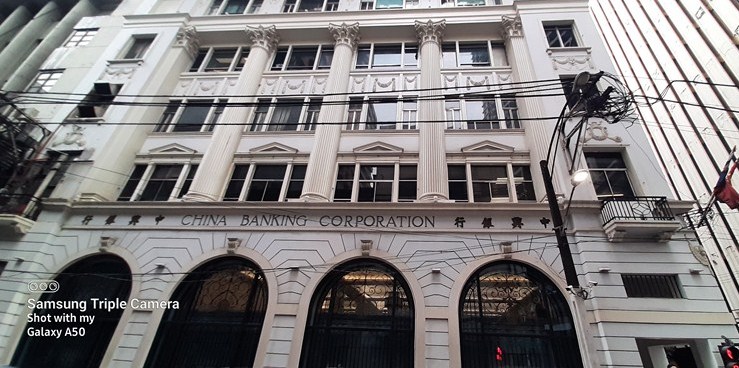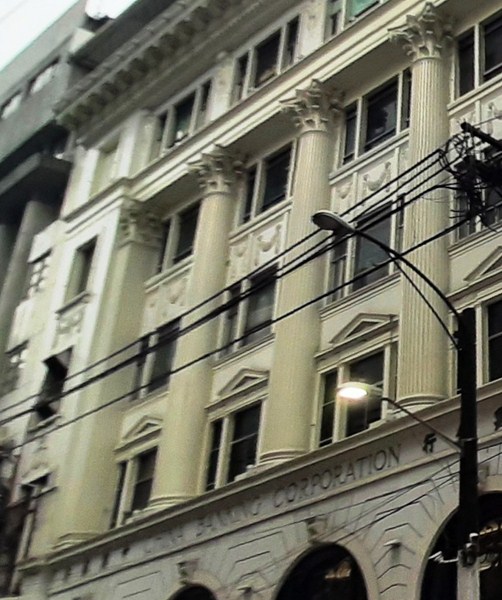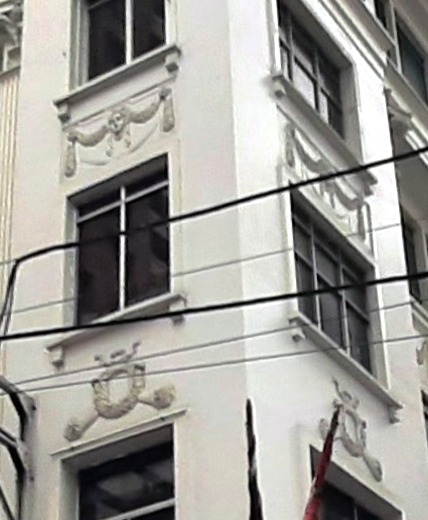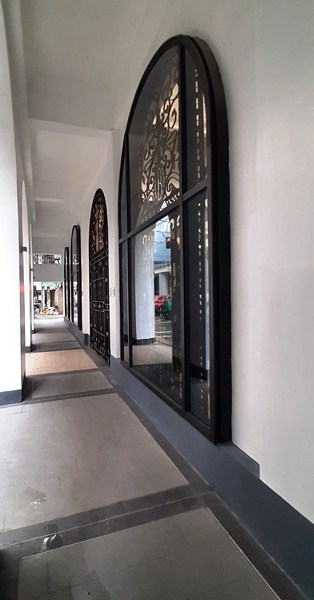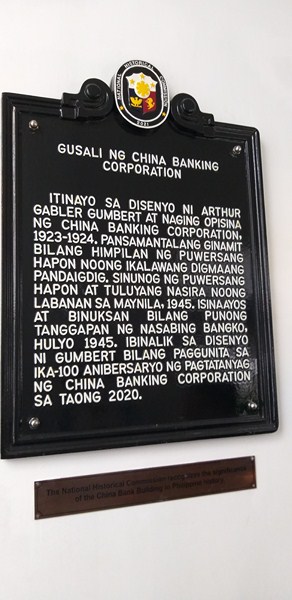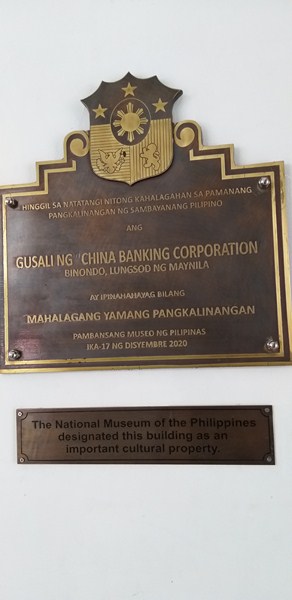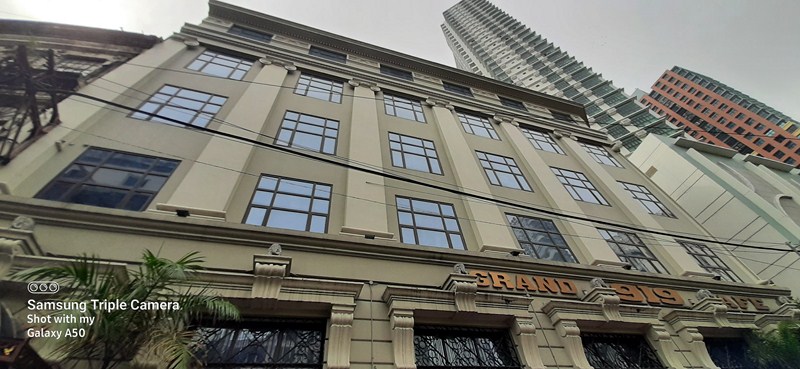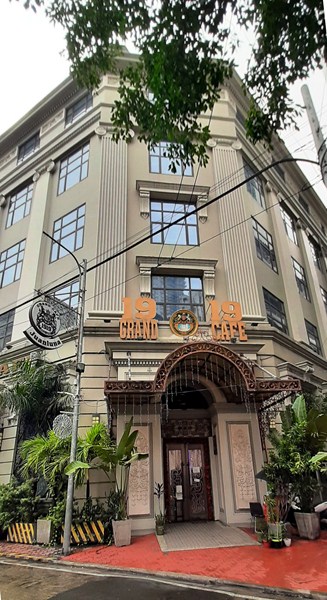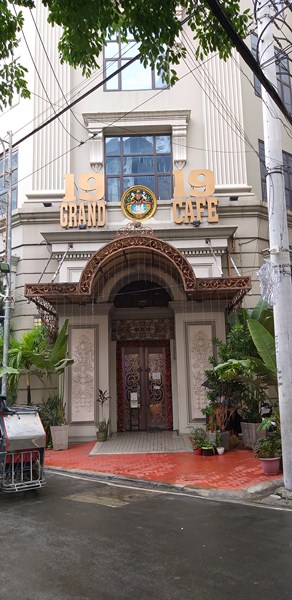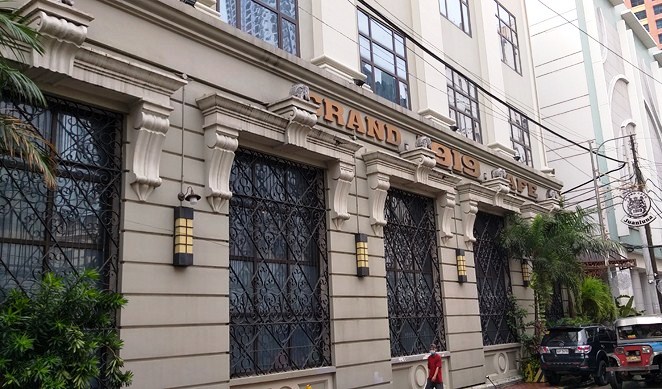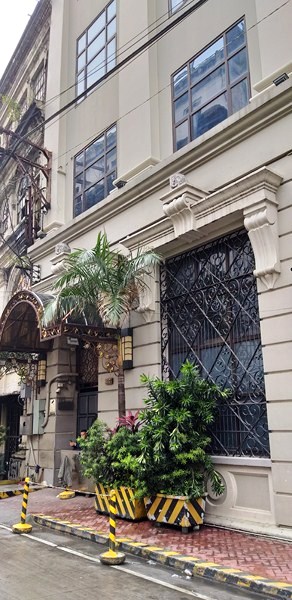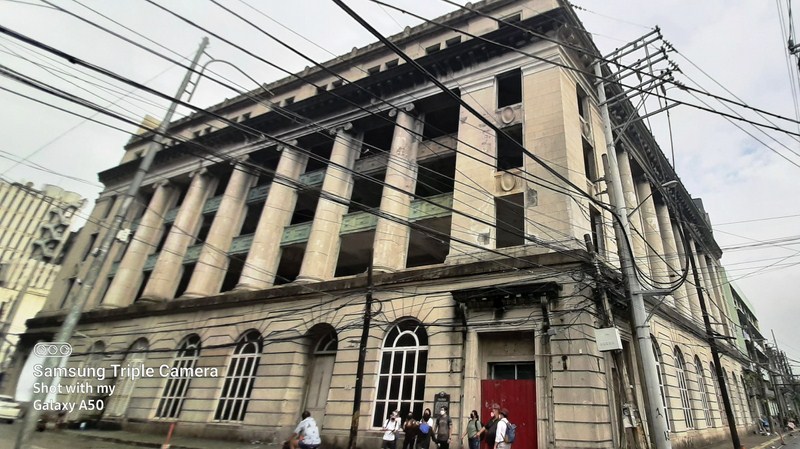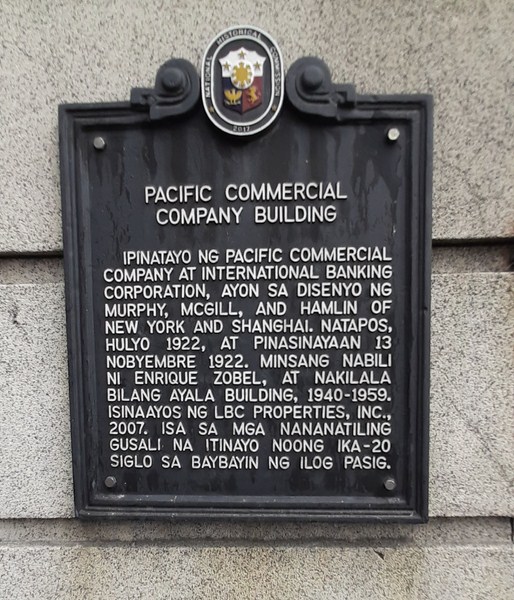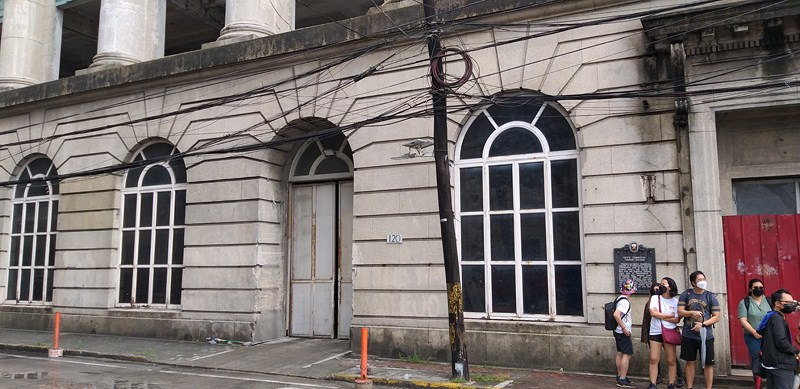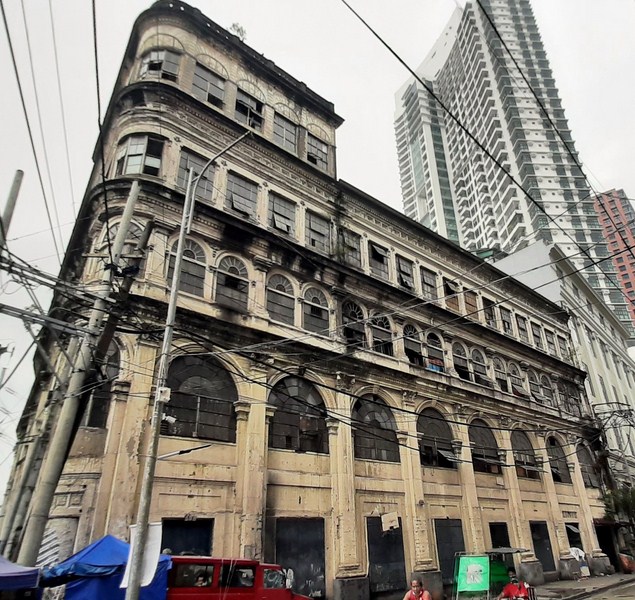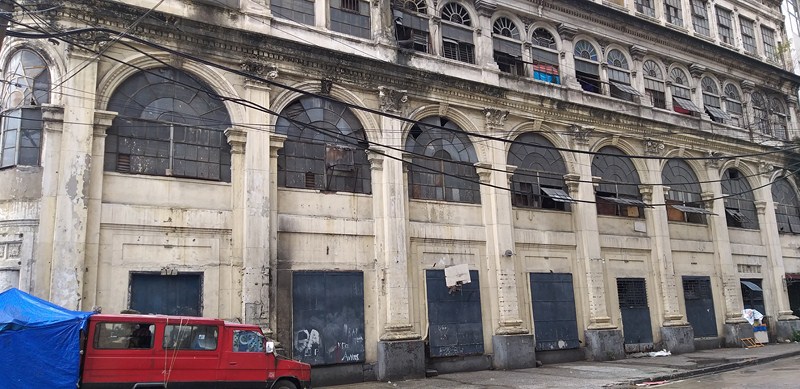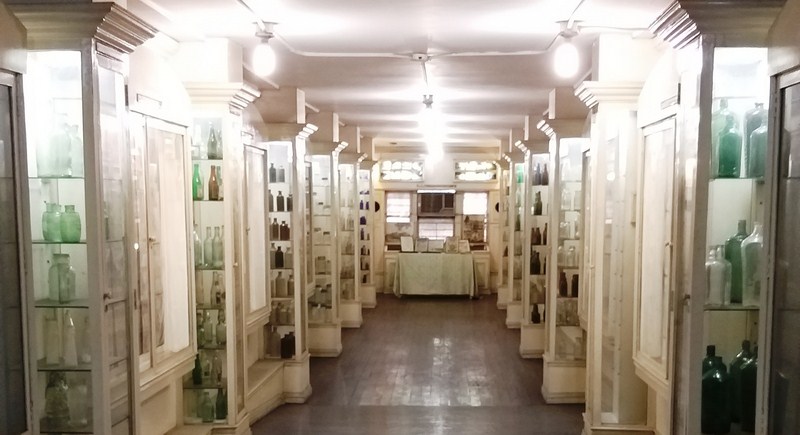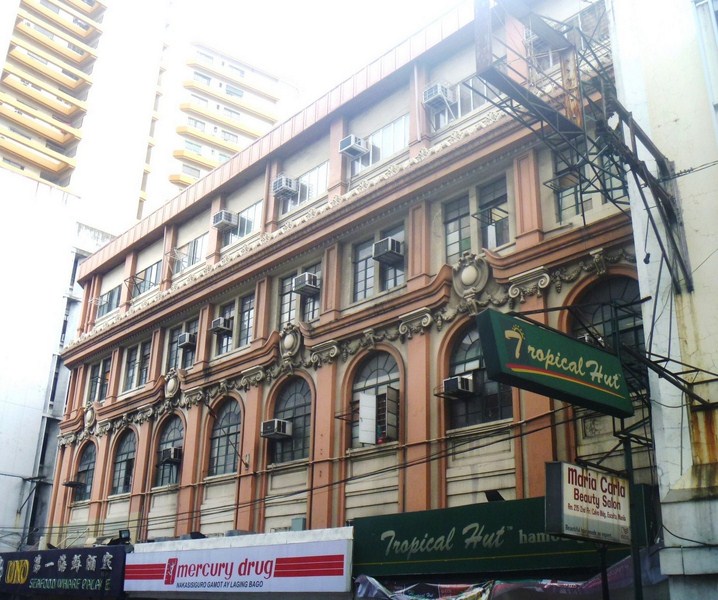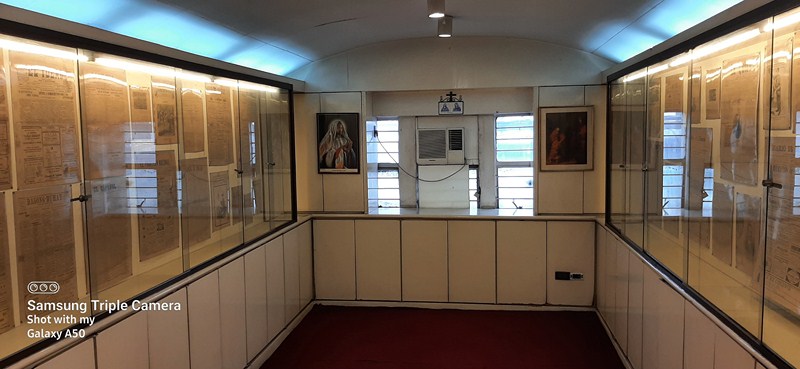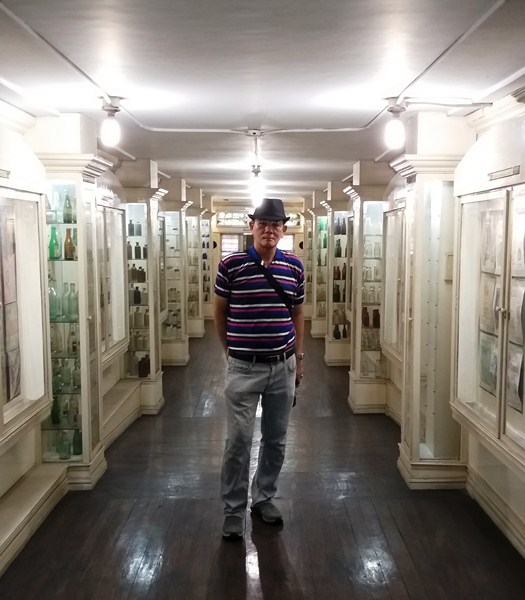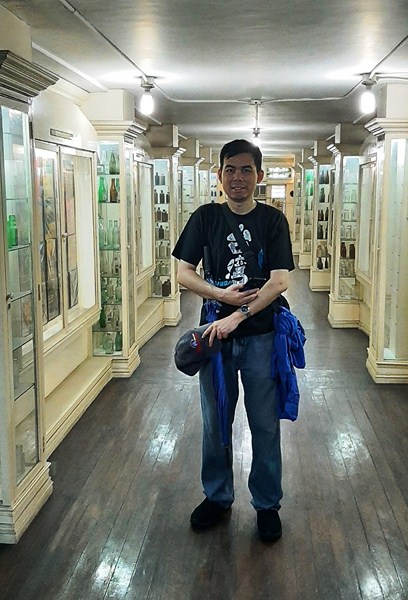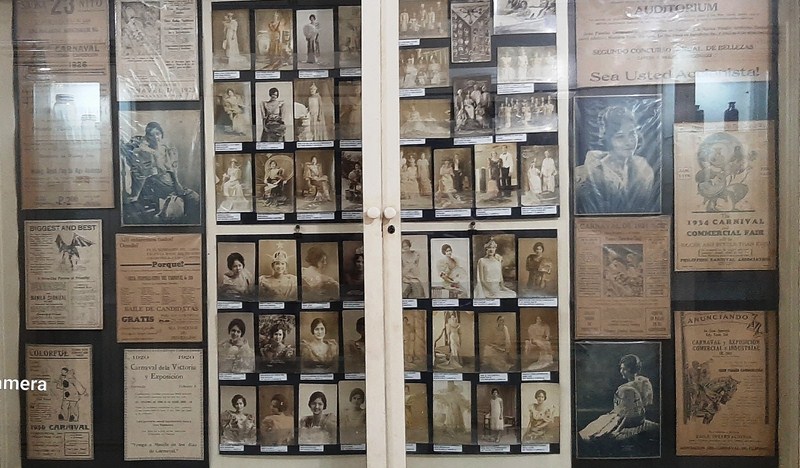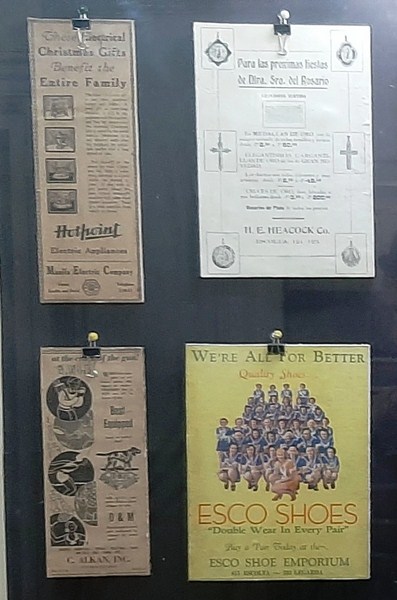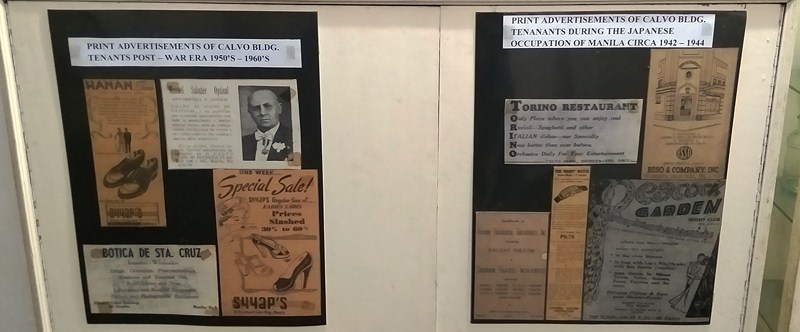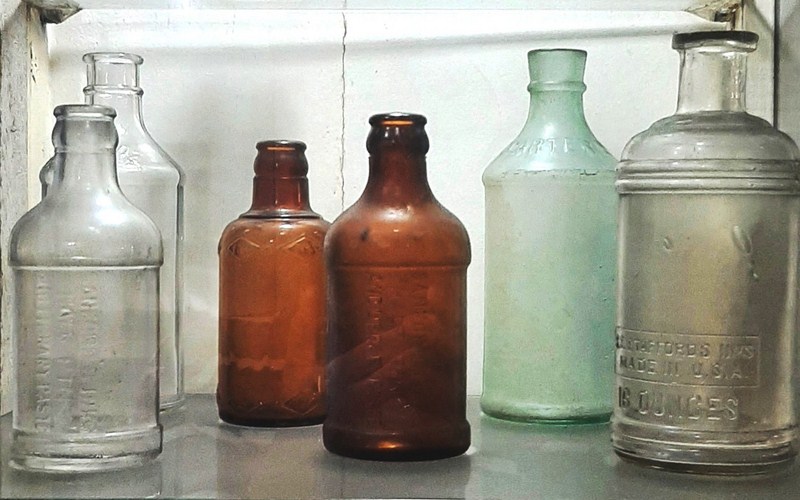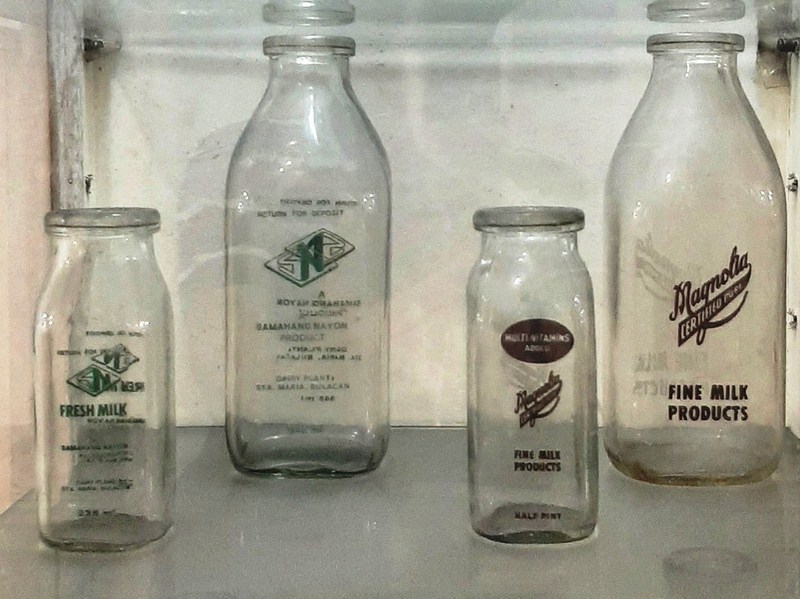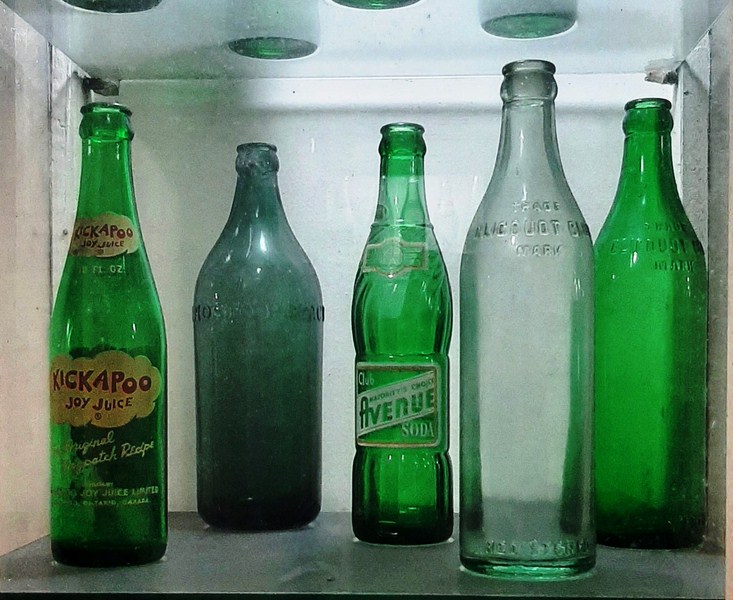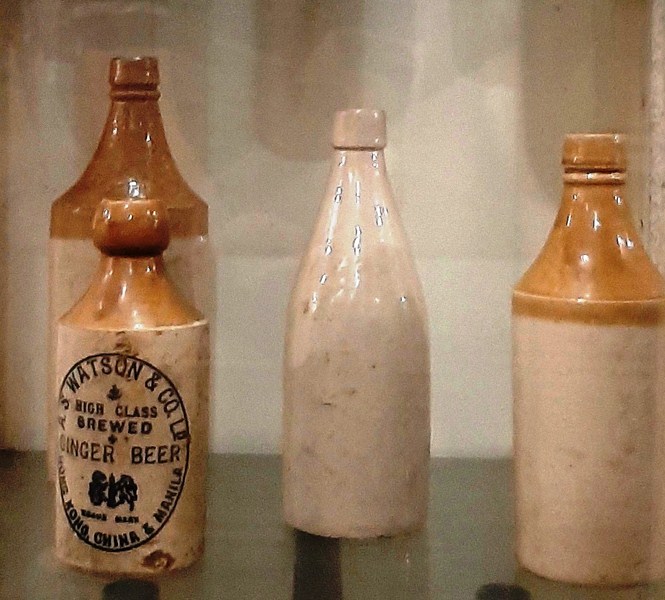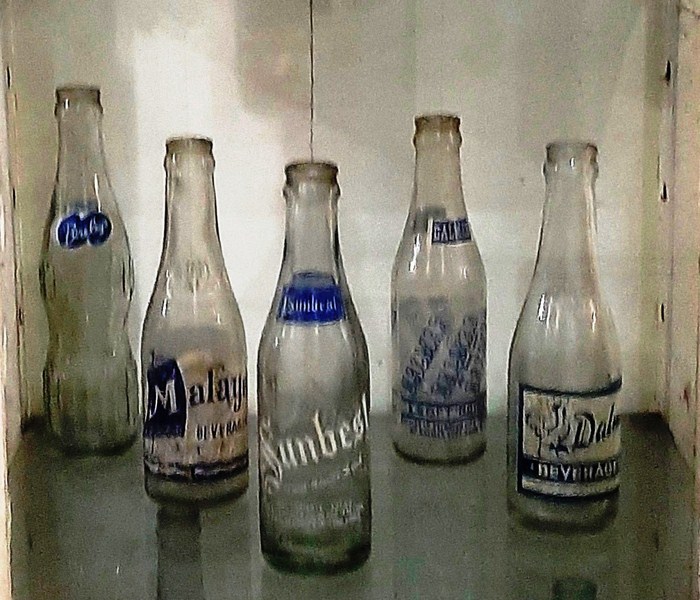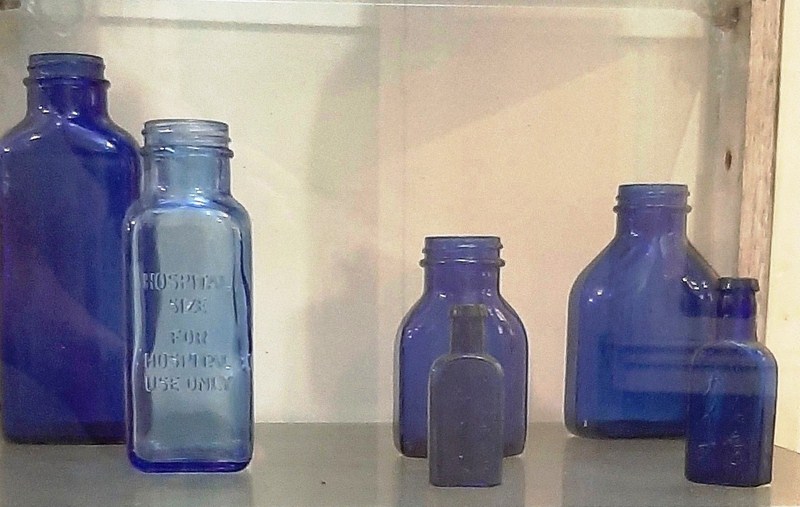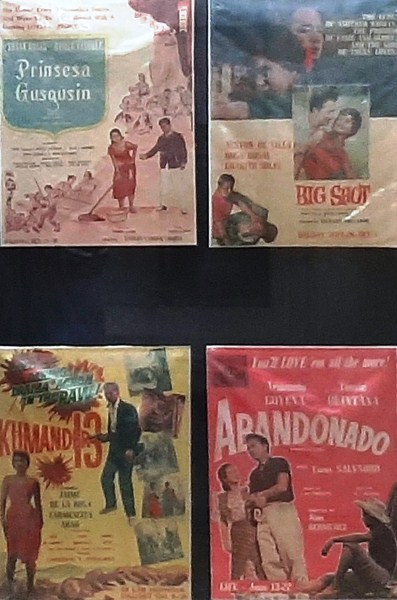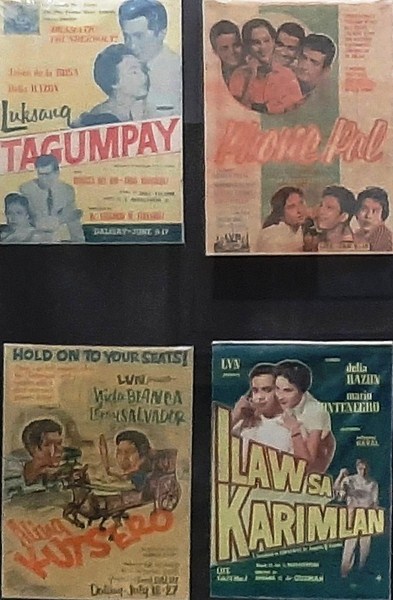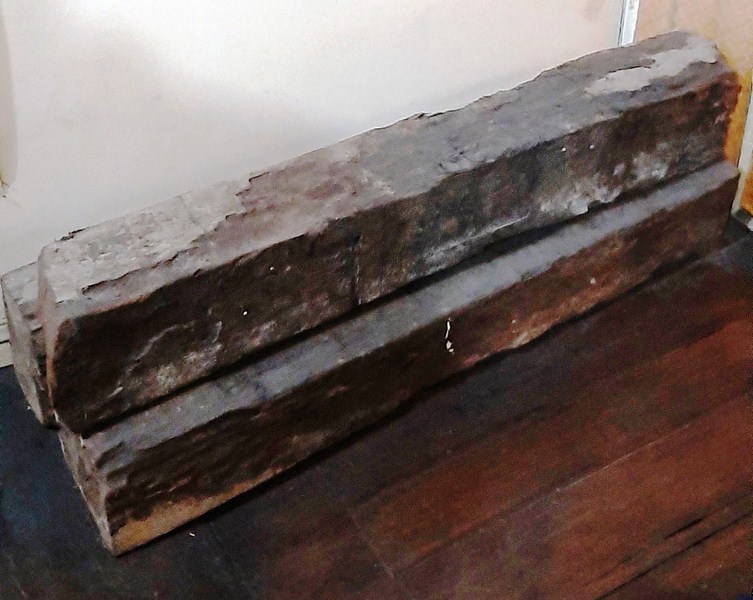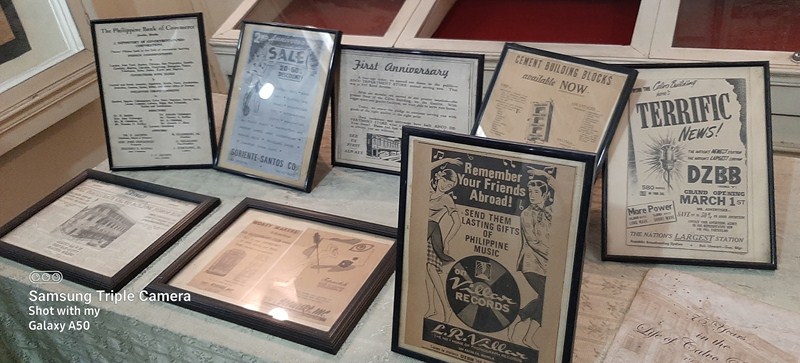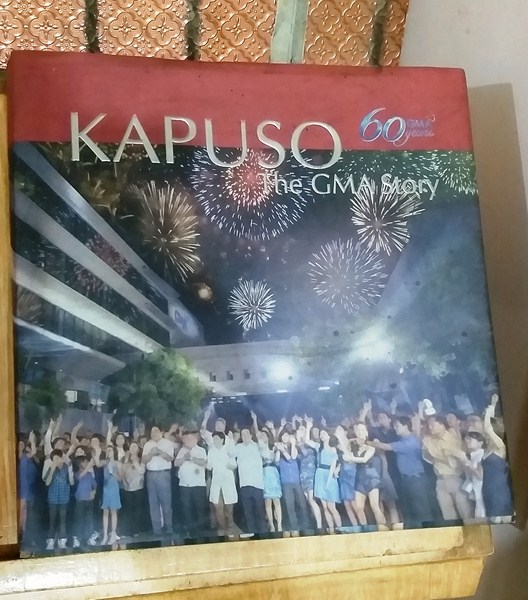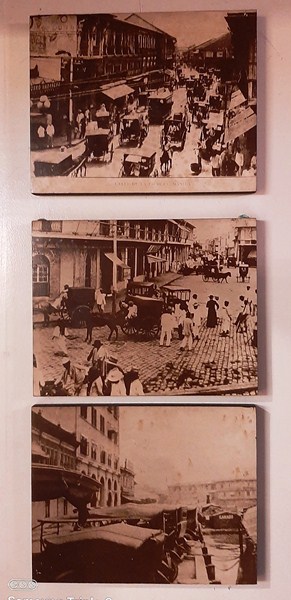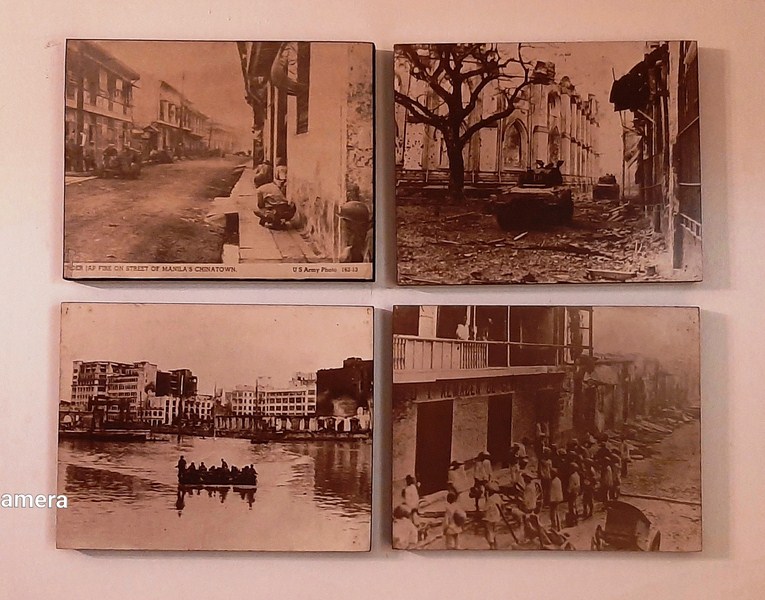The National Museum of Fine Arts (Filipino: Pambansang Museo ng Sining), an art museum formerly known as the National Art Gallery, is housed in the Old Legislative Building and is located on across from the National Museum of Anthropology (former Department of Finance Building) in the eastern side of Rizal Park. Owned and operated by the National Museum of the Philippines, the museum was founded in 1998 and houses a collection of paintings and sculptures by classical Filipino artists such as Juan Luna, Félix Resurrección Hidalgo and Guillermo Tolentino.
Check out “National Museum of Anthropology,” “Old Legislative Building” and “National Art Gallery”
The National Fine Arts Collection (NFAC), the growing collection of visual arts and archives, constitutes a large part of our country’s artistic patrimony and featuring the achievements and aspirations of Filipino visual artists. It is composed of a significant number of paintings, sculptures, icons, sketches, mixed media, painted photographs, prints, drawings, studies, installation art, sculptures, documents, memorabilia and photographs by Filipino visual artists who significantly impacted the nation’s artistic heritage. It includes important works of unknown artists of the 18th century, masters of the 19th century, National Artists, up to the leading modern artists of the 1990s to the 21st century.
Its increasing photography collection, by renowned art photographers, is a recent development. It includes the contemporary works of Isa Lorenzo, Neal Oshima, George Tapan, Bengy Toda, and Ferrante Ferranti.
The present National Museum of Fine Arts houses 29 galleries (most offered to sponsors and patrons, individuals or corporations, for the naming right) and hallway exhibitions comprising of 19th century Filipino masters, National Artists, leading modern painters, sculptors, and printmakers. Also on view are art loans from other government institutions, organizations, and individuals.
First Floor: The Judiciary Floor
- The Government William H. Taft Entrance
- The Architect Juan M. Arellano Foyer
- The Sandiganbayan Reception Hall
- Seminar Rooms
- The National Fine Arts Repository
- The National Archaeological Repository
- Auditorium (North Annex)
- Administrative Offices (South Annex)
Second Floor: The House of Representatives Floor
- The Padre Jose Burgos Entrance
- The President Manuel Roxas Foyer
- The Spoliarium Hall
- Gallery I: Religious Art from the 17th to 19th Centuries (Luis I. Ablaza Hall)- features Christian themed art from the 17th-19th centuries.
- Gallery II: Gallery of the Via Crusis of an Unknown Bohol Master (Friends for Cultural Concerns of the Philippines, Inc. Hall) – features 14 paintings depicting the Stations of the Cross (Via Crusis).
- Gallery III: Paintings of the Philippine Colonial Tradition of the Sacred Arts (Ramon and Milagros Del Rosario Family Hall) – exhibits the paintings that show images of saints and the Holy Family.
- Gallery IV: Paintings of the Philippine Colonial Tradition of Portraiture (Fundacion Santiago Hall) – exhibits more than 30 portraits that showcase the status of the living and memories of the dead.
- Gallery V: The National Hero in Art (Dr. Jose Rizal Hall) – displays sculptures and paintings made by the Philippine National Hero, Dr. Jose P. Rizal, as well as the artists who created paintings, portrait busts, and sculptures of the National Hero.
- Gallery VI: Gallery of Paintings of Los Dos Pintores Juan Luna and Felix Hidalgo (Far East Bank and Trust Company – Andres and Grace Luna de San Pedro Memorial Hall) – features major works and oil studies by Juan Luna as well as Félix Resurrección Hidalgo, Luna’s contemporary and friend.
- Gallery VII (Special Exhibition Hall)
- Gallery VIII (Silvina and Juan Laya Hall) – features paintings by Filipino artists who want to show the painful and hard life during the Imperial Japanese Occupation during 1941 to 1945, liberation of the Philippines by American and Filipino forces and the damage that happened in Manila during the war.
- Gallery IX (Early 20th Century Philippine Portrait Hall) – features a collection of works of portraiture and Filipino types by artists under the Classical Realist School during 1903 to 1960 and works of artists that are the pioneer and prolific during that period.
- Gallery X (Museum Foundation of the Philippines Hall)
- Gallery XI: Drawings of Fernando C. Amorsolo (Society for the Preservation of Philippine Culture Hall) (SPPC Hall) – features over 100 black-and-white pencil and ink sketches and oil studies of the National Artist Fernando Amorsolo before creating his masterpiece.
- Gallery XII – Eskultor ng Lahing Filipino: Honoring the Life and Work of Guillermo Tolentino (Security Bank Hall) – features the work of National Artist of the Philippines for Sculpture (1973) Guillermo E. Tolentino.
- The President Sergio Osmena Function Hall – houses the Madonna with Angels (ca. 1946), a plaster relief by Francesco Riccardo Monti, donated by the heirs of Petronillo L. Del Rosario, Sr.
Check out “Gallery I: Religious Art from the 17th to 19th Centuries,” “Gallery II: Gallery of the Via Crusis of an Unknown Bohol Master,” “Gallery III: Paintings of the Philippine Colonial Tradition of the Sacred Arts,” “Gallery IV: Paintings of the Philippine Colonial Tradition of Portraiture” “Gallery V: The National Hero in Art,” “Gallery VI: Gallery of Paintings of Los Dos Pintores Juan Luna and Felix Hidalgo,” “Gallery VIII,” “Gallery IX,” “Gallery XI: Drawings of Fernando C. Amorsolo” and “Gallery XII – Eskultor ng Lahing Filipino: Honoring the Life and Work of Guillermo Tolentino”
Third Floor: The Senate Floor.
- The President Manuel L. Quezon Foyer
- Gallery XIII (Vicente and Carmen Fabella Hall) – features works by National Artist for Sculpture (1976) Napoleon Veloso Abueva (1930-2018) and a monumental painting by National Artist for Painting (1973) Carlos V. “Botong” Francisco (1912 – 1969).
- Gallery XIV: Pillars of Philippine Modernism – features Philippine modern art from the 1920s-1970s, most notably Victorio C. Edades, an artist who started the Modern Art in the Philippines.
- Gallery XV (Emilio Aguilar Cruz Hall) – is dedicated to the life and works of Emilio Aguilar Cruz (1915-1991).
- Gallery XVI (Philippine General Hospital Hall) – is dedicated to The Progress of Medicine in the Philippines, a set of four large-scale paintings by celebrated muralist and National Artist Carlos V. “Botong” Francisco (1912-1969) that depicts the evolution of healing practices in the Philippines from the pre-colonial period tribal practices to the modern period.
- Gallery XVII (Special Exhibition Hall Dedicated to Women’s Art)
- Gallery XVIII: Pillars of Philippine Modernism – features Modernist art pieces from the 1940s to 1980s, with works by a number of National Artists such as Carlos V. “Botong” Francisco (1912-1969), Jose T. Joya (1931-1995), Cesar T. Legaspi (1917-1994), and Abdulmari Asia Imao (1936-2014). Also displayed are palettes of Jose T. Joya and Mauro Malang Santos (1928-2017).
- Gallery XIX (Philippine Modern Sculpture Hall)
- Gallery XX (Placuna Placenta: Capis Shells and Windows to Indigenous Artistry)
- Gallery XXI (GSIS North Hall) – features National Artist Federico Aguilar Alcuaz’s (1932-2011) Art Protis from the collection of the Government Service Insurance System (GSIS). Art protis or non-woven tapestry is a unique process developed in Brno, the second biggest city in the Czech Republic. There, Alcuaz met a Czech artist who introduced him to the new textile collage technique. This exhibition shows Alcuaz’s skills and talent in using this foreign technique to create outstanding collage artworks.
- Gallery XXII (International Rice Research Institute Hall) – features two large-scale paintings and their watercolor studies by National Artist Vicente S. Manansala (1910-1981) from the collection of the International Rice Research Institute (IRRI).
- Gallery XXIII (GSIS Northwest Hall) – pays homage to the works of National Artist for Painting Vicente S. Manansala (1910-1981). It contains his works from the National Fine Arts Collection and the Government Service Insurance System (GSIS) art collection.
- Gallery XXIV (Philam Life Hall) – shows seven large paintings by National Artist Vicente S. Manansala (1910-1981) commissioned in the 1960s by the Philippine-American General Life Insurance Company (Philam Life) for its building at United Nations Avenue, Ermita, Manila. Also featured here are rural-themed wood reliefs by renowned sculptor, Jose P. Alcantara (1911-2005), which previously adorned the Philam Life Theater.
- The Senate Session Hall (Main Level) – features modern and contemporary Philippine art from the 20th to the 21st centuries. All the ornamentation and decoration in this Hall was done by Isabelo Tampinco.
- The Senator Claro M. Recto Function Hall
“Gallery XIII,” “Gallery XIV: Pillars of Philippine Modernism,” Gallery XV,” “Gallery XVI,” “Gallery XVIII: Pillars of Philippine Modernism,” “Gallery XIX,” “Gallery XXI,” “Gallery XXII,” “Gallery XXIII” and “Gallery XXIV”
Fourth Floor: The Executive Floor.
- The Senator Benigno S. Aquino Jr. Foyer
- Gallery XXV
- Gallery XXVI
- Gallery XXVII (Special Exhibition Hall)
- Gallery XXVIII (Special Exhibition Hall)
- Gallery XXIX (Philippine Modern Sculpture Hall)
- The Senate Session Hall (Mezzanine Level)
- The President Jose P. Laurel Function Hall
- Management Offices
Check out “Circa by Impy Pilapil” and “Placuna Placenta: Capis Shells and Windows to Indigenous Artistry“
National Museum of Fine Arts: Padre Burgos Avenue, Ermita, Manila 1000, Metro Manila. Tel: (632) 8527-1215 and (632) 8298-1100. Email: inquiry@nationalmuseum.gov.ph. Website: nationalmuseum.gov.ph. Open Tuesdays to Sundays, 9 AM – 4PM. Admission is free. Coordinates: 14°35′13″N 120°58′52″E.

